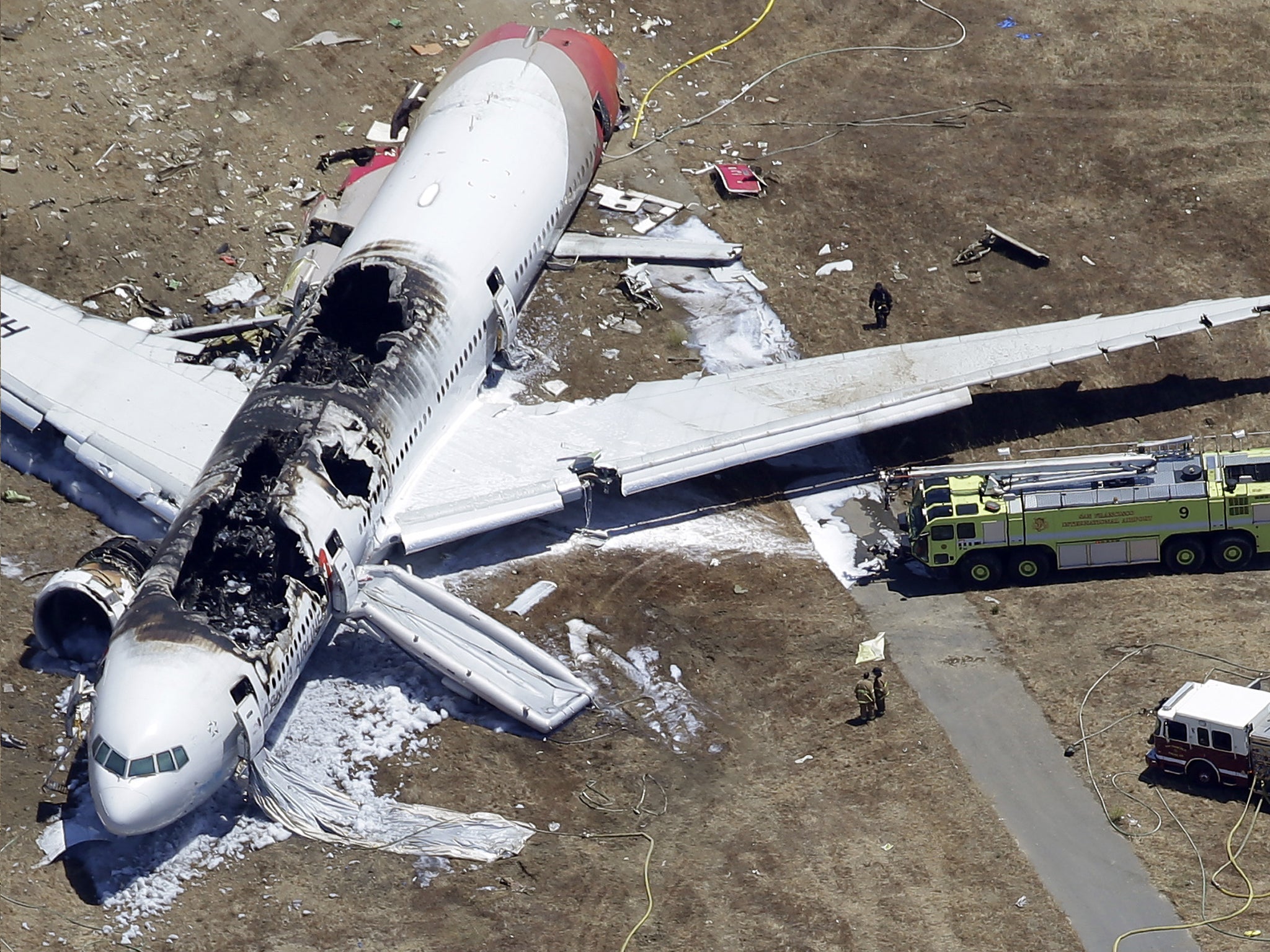Asiana San Francisco runway crash survivors to sue Boeing
Seatbelts and collapsing seats said to have exacerbated injuries of 83 people

Your support helps us to tell the story
From reproductive rights to climate change to Big Tech, The Independent is on the ground when the story is developing. Whether it's investigating the financials of Elon Musk's pro-Trump PAC or producing our latest documentary, 'The A Word', which shines a light on the American women fighting for reproductive rights, we know how important it is to parse out the facts from the messaging.
At such a critical moment in US history, we need reporters on the ground. Your donation allows us to keep sending journalists to speak to both sides of the story.
The Independent is trusted by Americans across the entire political spectrum. And unlike many other quality news outlets, we choose not to lock Americans out of our reporting and analysis with paywalls. We believe quality journalism should be available to everyone, paid for by those who can afford it.
Your support makes all the difference.A group of 83 passengers from the Asiana Airlines flight that crash-landed at San Francisco International Airport earlier this month has launched legal action against Boeing, the plane’s manufacturer, alleging that their injuries were exacerbated by seatbelts and collapsing seats.
Asiana flight 214 from Shanghai via Seoul had more than 300 people on board, including 291 passengers, when the 777 dropped short of the runway, striking a sea wall and slamming onto the tarmac. Three people were killed and more than 180 injured.
Though the US National Transportation Safety Board (NTSB) is still in the early stages of a lengthy investigation into the causes of the crash, on Monday law firm Ribbeck Law Chartered filed a “petition for discovery” in a court in Chicago, where Boeing is based. Ribbeck attorney Monica R Kelly said that several of the passengers represented by her firm suffered broken limbs, brain trauma or serious back injuries in the crash.
Though the NTSB investigation has so far focused on the actions of the Asiana flight crew in the minutes leading up to the doomed landing, the petition calls on Boeing to surrender plane maintenance records, as well as design, manufacturing and safety information, beginning the legal route to a lawsuit against the manufacturer. In a press release, Ribbeck said the South Korean airline would shortly be added as a defendant in the suit, along with the companies that build some of the 777’s component parts.
The law firm, which has long experience in tackling similar aviation cases, pointed to reports that the accident may have been caused by a faulty auto-throttle. Following the crash, at least two emergency slides inflated inside the burning fuselage, trapping passengers in the cabin. Some allege their injuries were exacerbated by inadequate seatbelts and collapsing seats. The law firm said a former chief investigator from the Canadian Transportation Safety Board would assist with the lawsuit.
Last Friday the crash claimed its final victim, schoolgirl Liu Yipeng, who had been in critical condition at a San Francisco hospital. Liu was one of three Chinese teenagers killed in the accident, though none of their families are taking part in the planned lawsuit. Among those represented by Ribbeck is Zhang Yuan, who sustained spinal injuries and broke her leg in the crash. In a statement, she said, “My husband, my daughter, other passengers and I would not have suffered such terrible injuries if the sliding ramps and the seat belts would not have trapped us in the burning wreckage.”
Asiana also faces separate legal action from two Korean flight 214 passengers, Younga Jun Machorro and her son, who, in a lawsuit filed in California on Monday, allege that the crew was responsible for “an extensive litany of errors and omissions” caused by improper training and supervision. They are seeking $5m (£3.3m) in damages.
Nobody was killed in the crash-landing of a British Airways 777 at London Heathrow in 2008, though 65 passengers later successfully sued Boeing and Rolls Royce, who settled the suit last year for an undisclosed sum. That plane was found to have lost power due to a build-up of ice, which restricted the flow of fuel into its Rolls Royce engines.
Join our commenting forum
Join thought-provoking conversations, follow other Independent readers and see their replies
Comments